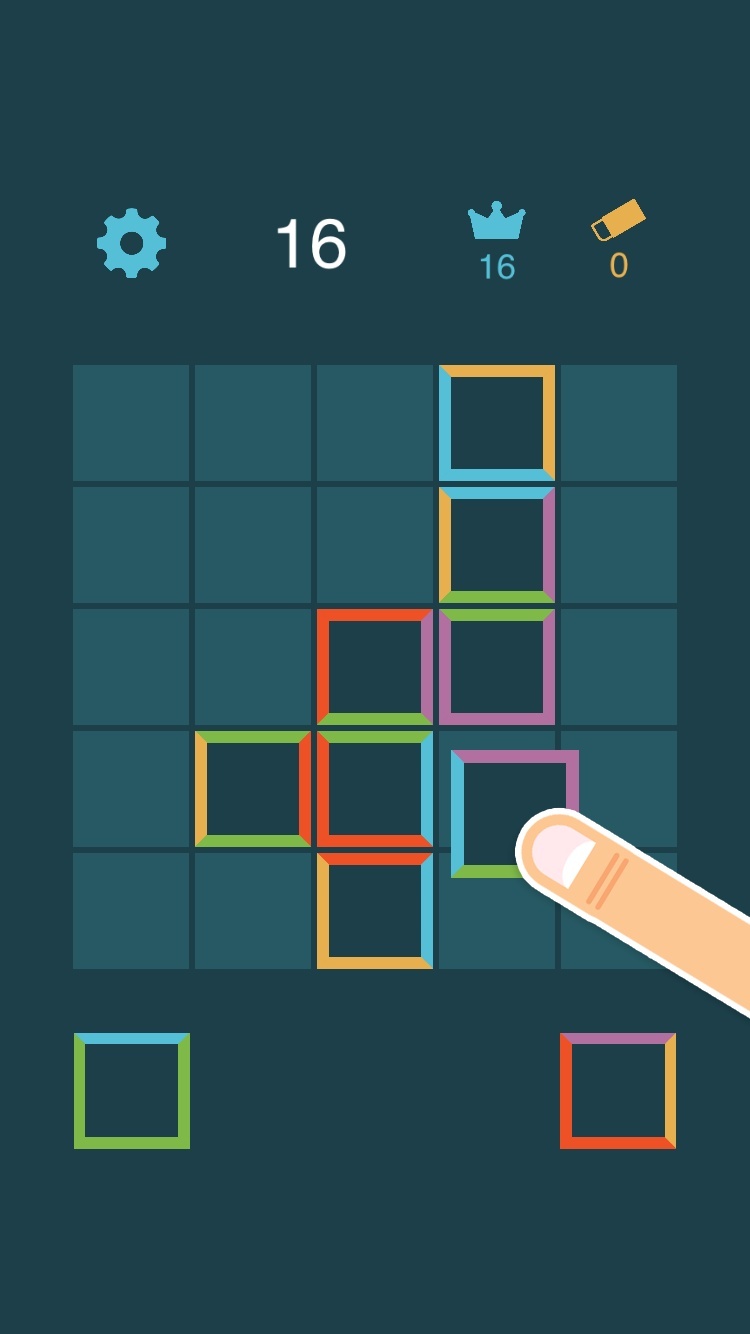Edges Endless (iOS) Review
By Luna Eriksson  04.02.2017
04.02.2017

Edges Endless is one of those games that has a really neat and self-explanatory title; connect endless blocks by the colours of their sides to create larger squares and score points. The difficulty increase is tackled in an interesting way, although not fully, as the very nature of the game makes it more and more difficult over time. Will it be enough to impress?
Edges Endless aims to satisfy that sweet spot for a simple, yet mind-teasing high-score hunt that many hits in the genre before it have succeeded with and ascended to being ageless classics that keep generation after generation hooked.
At first glance, Edges Endless seems to hit this spot flawlessly, with its gameplay focused around connecting boxes by the colours of their sides to (hopefully) later create squares, forcing the boxes to disappear and subsequently cash in points. Players are rewarded handsomely for creating bigger squares, which leads to there always being that risk versus reward factor to account for when thinking about the correct strategy to lay out the stages. Parallels are instantly drawn towards another game in the genre, which has sold close to a humble 500 million copies over the years.
In theory, Edges Endless might seem like a wonderful and perfect game. There is something that does not feel quite right, though; it does not have the addicting hook that is required to be a great title. The problem is that it never shows any urgency, as the player is given infinite time to figure out where to place the blocks. It is necessary, though, thanks to how complicated the risk calculation behind each block placement is, as it matters a lot how the blocks are placed, and this is dependent on how every single other block on the board is placed.

Thanks to this, Edges Endless turns into a very complicated affair to play. It makes something that seems really easy become overly complex in a way that is extremely displeasing to play for long periods of time in contrast to what puzzle games should strive towards. It also never feels like you are "solving" anything, either, as the nature of the game feels like the RNG solves that final part of the great square you built, even if it, in reality, is thanks to a series of closely calculated placements to create a board state where everything would solve it for you. It also never really uses the Zeigarnik effect at all, as the player might accidentally be rewarded by RNG for leaving big glaring holes on the field, rather than being forced to go back and fix them, or permanently be punished for it.
Edges Endless is a sweet attempt at creating the next big puzzle title, but it falls flat, as it fails to hit many of the more hidden qualities of what makes a block matching puzzler great. It never feels like you solve anything thanks to how the game makes itself feel RNG dependent, as you at best had a 1/16 shot at filling that specific edge of the square. It does not matter that this isn't true, as the complexity rests in improving these odds if it never feels like that.

Cubed3 Rating
Subpar
Edges Endless is a theoretically well-designed puzzle game that fails to appeal to the human mind. No one likes the feeling of RNGesus saving the day for them, even as they themselves paved the way for it to happen. It does not leave the satisfaction of solving a puzzle, and it never feels urgent nor important.

![]() 4/10
4/10
![]() 0
(0 Votes)
0
(0 Votes)
 Out now
Out now  Out now
Out now  None
None  Out now
Out now Comments
Comments are currently disabled

 Sign In
Sign In Game Details
Game Details Subscribe to this topic
Subscribe to this topic Features
Features





 Top
Top

